Shandong question and the long-suffering port of Qingdao
As early as the 14th century, after the overthrow of the rule of the Mongolian Yuan dynasty, a new administrative unit was created — the Shandong Province — which included the Shandong Peninsula and the Liaodong Peninsula. However, when China was conquered by the Manchus, the borders of the province were changed - the territory of Liaodong Peninsula was “subtracted” from it. Since the Shandong Peninsula had a favorable geographical position, in the second half of the XIX century it began to attract the attention of foreign powers, first of all - European countries and neighboring Japan. When China was defeated in the Second Opium War, the Shandong port of Dengzhou received the status of an open port, which implied the possibility of organizing trade with foreigners through this port.
The next stage of the colonial expansion of world powers to Shandong Province was associated with the First Japanese-Chinese War of the Year 1895. During this war, Japanese troops were able to land on the coast and capture Weihai, which was of strategic importance. The battle for Weihaiwei was one of the final episodes of the First Sino-Japanese War and was accompanied by a major naval battle of the Japanese and Chinese fleets. In 1898, China transferred the Weihai Port to the UK. This is how a territory called “British Weihai” appeared, including the port of the same name and adjacent areas on the Shandong Peninsula. Great Britain, renting Weihai, set as its goal to provide opposition to the Russian Empire, which rented the Liaodong Peninsula. Weihai was under British rule until the 1930 of the year, thus surviving the Russo-Japanese and the First World Wars. Naturally, the strategically important territories of the Shandong Peninsula were paid attention to by the authorities of the gaining strength of a new European power - Germany. In the 1890-s, Germany actively acquired new colonies in Africa, Asia and Oceania. There was no exception and the territory of China, where Germany also sought to acquire its own military and trade outpost.
The peculiarities of the historical formation and development of Germany did not allow it to promptly join the global division of the colonies. Nevertheless, Berlin hoped to consolidate its right to own colonies in Africa, Asia and Oceania. The German leaders also drew attention to China. According to the German leadership, the establishment of bases in China could, firstly, ensure Germany’s naval presence in the Pacific Ocean, and secondly, ensure the effectiveness of managing other overseas colonies of Germany, including in Oceania. In addition, huge China was viewed as a very important market for Germany. After all, there were practically unlimited opportunities for the export of German goods, but for this it was necessary to create their own outposts on Chinese territory. Since politically and economically China was greatly weakened at the time in question, 6 in March 1898 of the year Germany acquired the territory of Jiao-Zhou from China.
The administrative center of the territory controlled by Germany was the city and port of Qingdao, located on the Shandong Peninsula. He is now among the fifteen most important cities in China, and at that time its importance was even more ambitious, primarily as a major port. During the years of the Ming dynasty, the territory of Qingdao was used as an important naval port called Jiaoao. In the second half of the XIX century, the authorities of the Qing Empire, taking into account the situation around the Shandong Peninsula, decided to create a serious naval fortification here. 14 June 1891 was founded the city of Qingdao. However, given the lack of funding and organizational problems, its construction was slow. In 1897, the city and surrounding area became the object of close interest to Germany. In order to get Qingdao, Germany, as always, used the method of provocation. On the territory of Shandong, two German Christian missionaries were killed. After that, the German government demanded from the government of the Qing Empire to transfer the territory of the Jiao-Zhou Gulf under the control of Germany. A squadron under command of Rear Admiral Otto von Diderihs was sent to the peninsula. Germany demanded that China either hand over the island to it, or threatened to use military force, ostensibly to protect Christians in China.
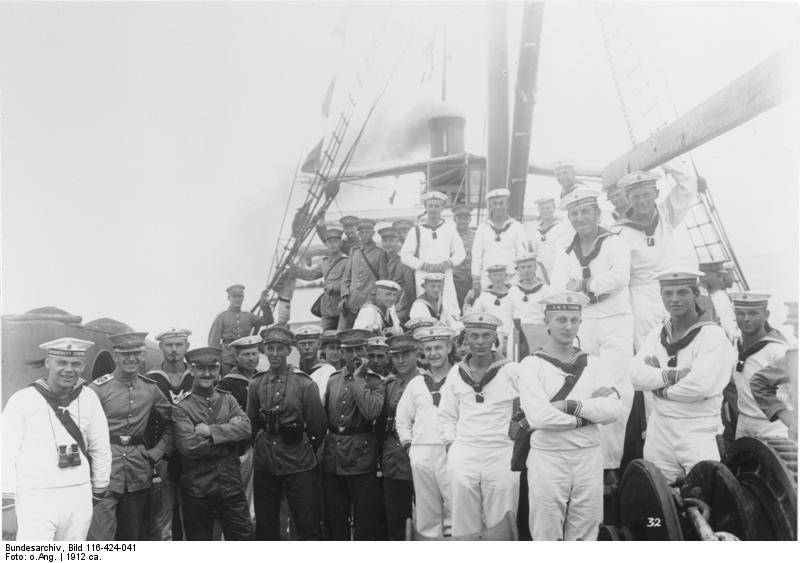
Understanding perfectly well that in the event of any armed conflict, the port of Qingdao will become one of the most important outposts of the German military presence, Berlin has begun a significant strengthening and strengthening of the city. Under German rule, Qingdao became a strong naval fortress. He was strengthened so that the city could withstand two to three months of the siege by the naval forces of the enemy. During this time, Germany could send reinforcements.
Unlike other colonies that were subordinate to the Imperial Administration of the colonies, the port of Qingdao was subordinated to the Maritime Administration - this emphasized the special status of German possession in China. In addition, Qingdao was primarily considered not even as a colony, but as a naval base, which required the administration of the territory not by the colonial, but by the naval department. The East Asian squadron of the German Navy was stationed in Qingdao Port fleet. Rear Admiral Otto von Diderichs became her first commander. The German naval command paid great attention to the East Asian squadron, since it was precisely it that was supposed to ensure the inviolability of German interests in the Asia-Pacific region.

Before the beginning of World War I, the East Asian squadron consisted of the following ships: 1) Scharnhorst armored cruiser, serving as flagship, 2) Gneisenau armored cruiser, 3) Nuremberg light cruiser, 4) “Lye” cruiser “Lye” cruiser “Lei”, “XIUMX”, light cruiser “Nuremberg”, 5) light cruiser “Nuremberg”, 4) light cruiser “Nuremberg” , 3) light cruiser Emden, as well as 1 seagoing gunboats of the Iltis type, 90 river gunboats, XNUMX minelayer Lauting, Taku and S-XNUMX squadrons. For service on the ships were selected officers, non-commissioned officers and sailors who had extensive experience and good training. But since the ships themselves were not modern and could not withstand open battle with British warships, in the event of the outbreak of hostilities in the Pacific, they were given the task of attacking the commercial and transport ships of the countries of the enemy with the aim of flooding them. So Germany was going to wage an "economic war" in the Asia-Pacific region.
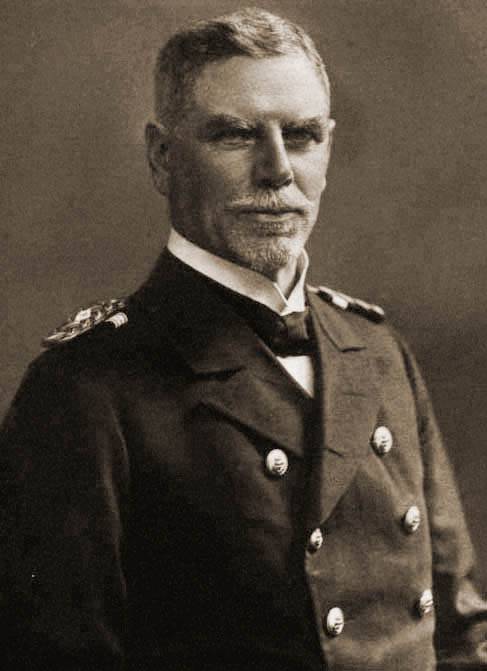 The command of the East Asian squadron in 1914 was carried out by Vice-Admiral Maximilian von Spee (1861-1914, in the photo) - an experienced naval officer who had made quite a good career in the Prussian fleet. Starting service in 1878, he served as lieutenant in the African Cruiser Squadron in 1884, became commandant of the port in Cameroon in 1887, and headed the East Asian Squadron in 1912.
The command of the East Asian squadron in 1914 was carried out by Vice-Admiral Maximilian von Spee (1861-1914, in the photo) - an experienced naval officer who had made quite a good career in the Prussian fleet. Starting service in 1878, he served as lieutenant in the African Cruiser Squadron in 1884, became commandant of the port in Cameroon in 1887, and headed the East Asian Squadron in 1912. The beginning of World War I caught Vice Admiral von Spee on the road. He was located in the Caroline Islands, then also belonged to Germany. Considering that the squadron could be blocked in Qingdao, he ordered the main part of the ships to move to the coast of Chile, leaving only destroyers and gunboats in the port. The latter were to engage in attacks on the merchant ships of countries opposing Germany. However, the cruiser Emden, commanded by Captain Karl von Muller, remained in the Indian Ocean - such was the proposal of Muller himself. The cruiser managed to capture the UK's 23 merchant ship, the Russian cruiser Zhemchug in the port of Penang in Malaya, and the French destroyer before it was sunk in the Cocos Islands region in November by the Australian cruiser Sydney.
- "Emden"
As for the main part of the ships of the East Asian squadron, they headed for Easter Island, and on November 1, near the Chilean coast, crushed the British squadron of Admiral Christopher Cradock, consisting of four ships. Then admiral von Spee was to follow the Atlantic to join the main forces of the German fleet. But he decided to attack the British forces at Port Stanley in the Falkland Islands, where he suffered a crushing defeat. The December 8 cruisers of the Scharnhorst, Gneisenau, Leipzig and Nuremberg were sunk. Admiral von Spee himself and his sons who served on the ships of the squadron died in battle.
Meanwhile, after the outbreak of World War I, Qingdao’s fortress remained under the safe protection of German coastal batteries. However, the German command did not expect to join the First World War on the side of the Entente located in the neighborhood of China, Japan. If against the few expeditionary forces of France and England, which were based in the Asia-Pacific region, Qingdao could successfully keep the defense, then Japan had very great potential for carrying out an active and continuous siege of the fortress. 23 August Japan declared war on Germany, and already 27 on August the port of Qingdao was blocked by a squadron of the Japanese imperial navy that approached. At the same time, Japan began the landing of ground units on the territory of China, which declared its neutrality. 25 September, Japanese troops entered Jiao-Zhou territory. For the storming of the fortress heavy artillery was actively used by the Japanese army. October 31 The Japanese army began shelling Qingdao. On the night of November 7, Japanese troops launched an assault on the fortress. Forces of the attackers and defenders were clearly not equal. On the morning of November 7, Commandant Qingdao Meier-Waldeck announced the surrender of the fortress. Before that, the German garrison, as usual, destroyed the outbuildings, ships, weapons and other property located in Qingdao.
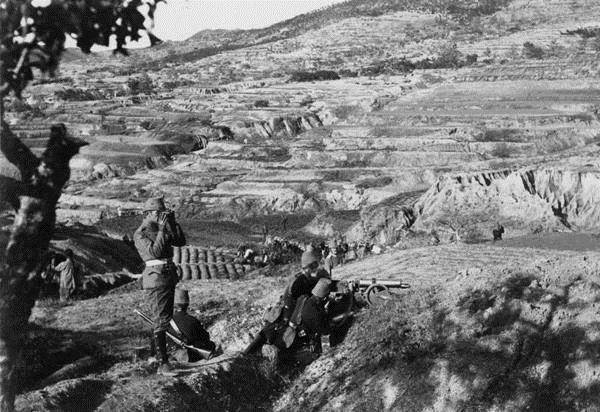
So Qingdao and the Jiao-Zhou concession came under Japanese occupation. When World War I ended in the defeat of Germany and its allies, China began to count on the return of Qingdao under its control. However, the Paris Peace Conference in 1919 decided to leave Qingdao under Japanese rule. So began the "Shandong crisis", which became the subject of discussion at the Versailles Conference. Great Britain and France, which had their own interests in China and did not want to strengthen it, supported the position of Japan, which hoped to keep Qingdao under its control. In China, in response, anti-imperialist speeches began. Another 4 on May 1919 of the year in Beijing was a grand demonstration, the participants of which demanded that the Chinese government refuse to sign a peace treaty. Then began the strikes of workers and merchants in Beijing and Shanghai. Under the influence of mass popular uprisings in China, the government of the country, which represented Gu Weijun, was forced to announce a refusal to sign a peace treaty.
Thus, the “Shandong question” became the subject of a serious international dispute, in which, as a mediator, the United States intervened. С12 November 1921 of the year 6 of February 1922 of the year Washington hosted the Washington Conference on Maritime Arms Restrictions and the Problems of the Far East and the Pacific Basin, which was attended by representatives of the United States, Great Britain, France, China, Japan, Italy, Belgium, the Netherlands, Portugal and five British dominions. This conference discussed the future prospects of political and economic relations in the Asia-Pacific region. Under US pressure, Japan was forced 5 February 1922 of the year to sign the Washington Agreement. This agreement, in particular, provided for the commencement of the withdrawal of Japanese troops from the territory of Shandong Province, as well as the return of the Qingdao-Jinan railway line and the Jiao-Zhou administrative territory with the port of Qingdao under control of China. Thus, in accordance with the decision of the Washington Conference, the Shandong issue was resolved. The port of Qingdao came under the control of the Chinese administration. In 1930, under the control of the Chinese authorities, the UK gave the port of Weihai.
When the Kuomintang government was formed in 1929 with its center in Nanjing, Qingdao received the status of “Special City”. But in January 1938, he was reoccupied by Japanese forces and remained under occupation until the end of World War II. After the war, the Kuomintang government returned Qingdao to the status of a “Special City” and gave the go-ahead to the deployment of the US Western Pacific Fleet base in the port of Qingdao. But on June 2, 1949, Qingdao was already occupied by parts of the People’s Liberation Army of China. At present, Qingdao is a major economic center and China’s naval base, and its port is visited by foreign merchant ships and even military delegations.
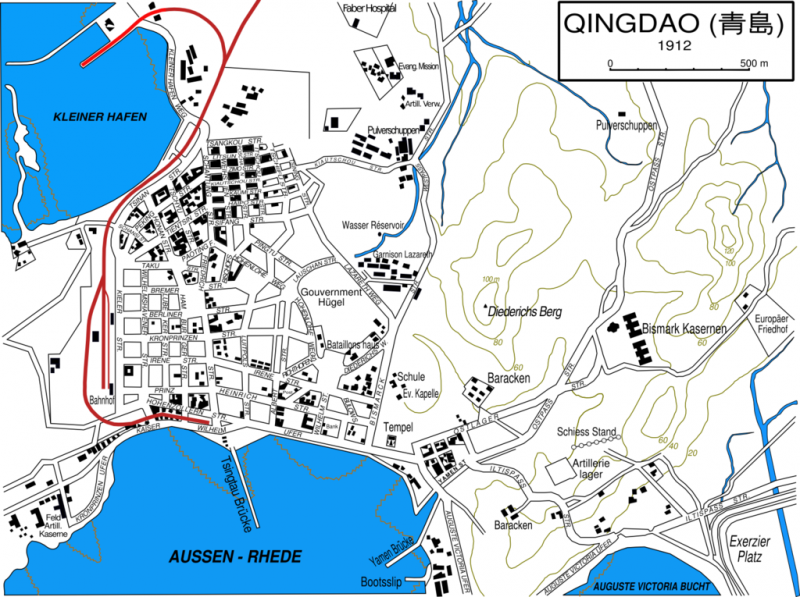
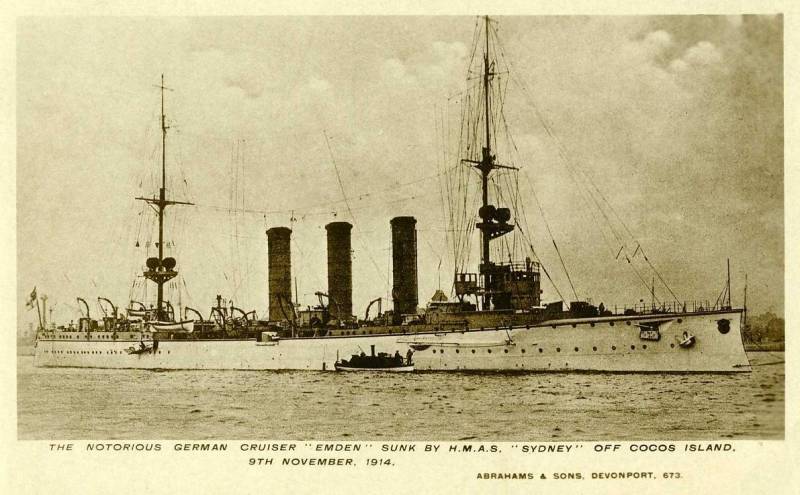
Information